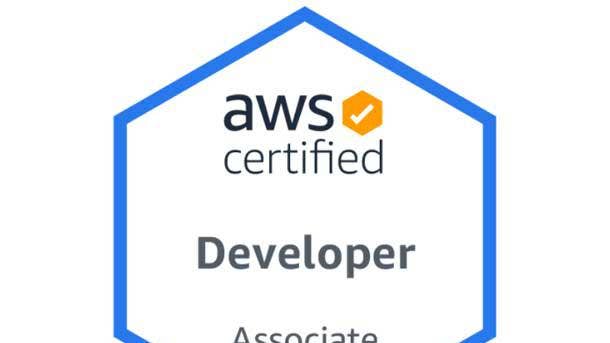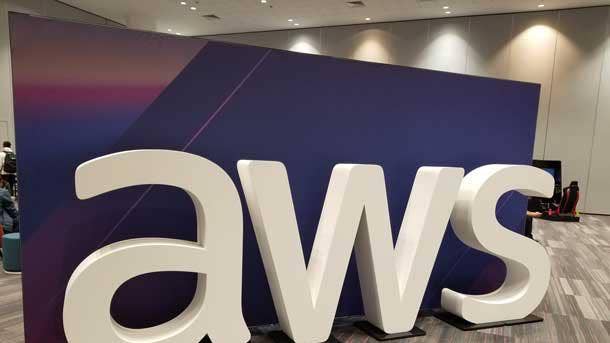AWS Channel Chief On Innovation ‘Riches’, Channel Changes And Simplification
Ruba Borno, AWS’ global channel chief, talks to CRN about her vision to “streamline and simplify” the AWS partner experience, boost co-selling and the “significant” cloud migration opportunities ahead for partners.

Ruba Borno: AWS Has ‘An Embarrassment Of Riches’ In Innovation
The $71 billion cloud market share leader has a new worldwide channel chief in Ruba Borno who has big plans in store to take AWS’ partner strategy to the next level with no limits to the massive amount of cloud opportunities ahead for partners.
“What we know from various analysts’ reports is that only five, maybe 15 percent of workloads that could migrate to the cloud have already migrated to the cloud. So the opportunity ahead of us is significantly greater than what we’ve already achieved,” said Borno in an interview with CRN. “ That’s what we’re really excited about and why I’m really excited to be in this role.”
Following a successful AWS Summit last week, which saw the Seattle-based public cloud superstar launch a slew of new products, Borno says AWS’ innovation engine is on fire.
“We have an embarrassment of riches as it relates to innovation, I think, and that’s a great place to be. Because all of that comes from customer needs,” said Borno.
As AWS’ innovation engine roars, the company’s sales are also spiking.
AWS grew sales by a whopping 40 percent in 2021 compared to 2020, as AWS increased from $51 billion in annual revenue to $71 billion last year.
Borno is taking over the channel reigns at AWS at a time when the company is witnessing huge customer success and driving innovation at warp speed.
“The opportunity ahead of us is significantly greater than what’s behind us. We’ve got more to discover together,” said Borno, vice president of Worldwide Channels and Alliances at AWS. “Our joint customers with our partners need cloud transformation. We saw that more than ever in the past few years. That need is continuing to accelerate.”
Borno joined AWS in November after spending years at networking giant Cisco. At Cisco, she was senior vice president and general manager of Cisco’s global customer experience centers and managed services.
In an interview with CRN, Borno breaks down her channel strategy, striving to simplify and streamline the AWS partner experience, and what changes partners can expect from AWS in 2022 and beyond.

What can AWS partners expect with you leading the way?
What you’ll see from AWS is a commitment across AWS, top-down, to our partner community. So that includes support. That includes programs that help them do business with AWS in service of our customers. We’re truly doubling down on working with partners in service of our customers.
I’m really excited to be standing on the shoulders of giants here having ten years of the AWS Partner Network and ten years of AWS Marketplace in terms of the impact on our partners and our customers. But we are really wanting to continue to capitalize on the benefits of the AWS Partner Network programs, and also the automation in the AWS Marketplace and benefits that it provides to our customers through our partners. So thrilled about what we’re doing there.
We want to continue to focus on streamlining partner onboarding and provide more navigation to them to make it easier for partners to navigate the AWS Partner Network and AWS in general. We want to continue to grow co-sell with them and help them transform our customers together.
The feedback we’ve received from all types of partners—whether it’s the SI’s (system integrators), channel partners, ISVs (independent software vendors)—they all want to have more time with us. And frankly, I want to have more time with them and our leaders want to have more time with them.
So we’re looking at different ways to engage them across the board. We will be engaging our partners more frequently.

You mentioned more co-selling with partners. What specific co-selling plans do you have in store for AWS’ partner community?
So just looking at the data, we know that partners that have strategic collaboration agreements with us are more productive than partners that do not.
One of the reasons is that there is typically a top-down program that we put together with our partner on: What are the customer segments that they want to go after? Where do we do joint account planning? And then, how do we ensure that the programs they take advantage of—whether it is discounts or rebates, or co-selling programs—are in service of them achieving their objectives.
So by having a focused plan, it actually gives us a higher likelihood of success when we go-to-market together because we know which customers to go after, in which geographies, which verticals, which horizontals, and we can match them to the account managers more seamlessly.
Now, what’s exciting about the AWS Marketplace is we actually do co-sell with them in an automated fashion. We do that with the end customer being the person that’s doing the transaction. Sometimes an account manager is in place, sometimes not, but I’m really excited about the automation that Marketplace provides us to enable our partners to co-sell with us more successfully.

Why should partners be pumped about AWS right now?
From our last public earnings call, AWS is a $70 billion-plus business growing 40 percent year over year.
But what we know from various analysts’ reports is that only five, maybe 15 percent of workloads that could migrate to the cloud have already migrated to the cloud. So the opportunity ahead of us is significantly greater than what we’ve already achieved. So that’s what we’re really excited about and why I’m really excited to be in this role.
Our joint customers with our partners need cloud transformation. We saw that more than ever in the past few years. That need is continuing to accelerate. From an AWS perspective, as it relates to our partners, it is still day one.
The opportunity ahead of us is significantly greater than what’s behind us. We’ve got more to discover together. And you’ll see our continued commitment to our partners.

Partners say it’s hard to keep up with all the net new launches from AWS, which isn’t necessarily a terrible thing. But what’s your strategy to help partners keep up with the pace of AWS innovation and new competencies?
We have an embarrassment of riches as it relates to innovation, I think, and that’s a great place to be. Because all of that comes from customer needs.
As it relates to our partners, I will say that my predecessor did a great job in launching the AWS Partner Paths that were launched and announced at re:Invent last year, which is simplifying the partner experience to five partner paths tied to their business models.
What we want to do is actually tailor the partner experience to our partners’ business model. Not only what is it that they’re selling, but which customers they are supporting, and also what’s driving their profitability.
We want to continue down that line of thinking of helping streamline the experience and simplify the experience. We know that we’ve got room to improve on making it simpler to do business with AWS by being a lot more proactive in guiding them.
One of the great things about the breadth of our innovation, the breadth of our customer base, is that we have a lot of insight that we should be using a lot more proactively to guide our partners on the highest return on investment of their time. And that’s something that you’ll see us do more of through the Partner Path experience.

Cisco is known for its successful channel programs. What do you hope to bring from Cisco to AWS in terms of channel strategy?
Rather than comparing to Cisco, I’ll just talk about AWS. We work backwards from the customer.
What we know is that our customers need help from partners in several different areas. So, for example, when we’re working with consulting partners—so business consulting and advisory partners—those are partners that are working with our customers on their all-up transformations. Whether it’s a business transformation, or a digital transformation, or an IT focused transformation—they’re working with them holistically. So working backwards from those customer needs, we partner with those business consulting advisory partners on an all-up transformation for our customers.
Our customers also need support with system integration. So our global system integrators actually have AWS business units because they see the tremendous value in having that technical depth and that capability to deliver those proper technical system integrations to the customer. They also advise them on those transformations.
I’ll extend that to all of our system integrator landscape. So thousands of partners locally, globally, that are supporting our customers in transforming their technical estates. So those are partners that we’re continuing to establish relationships with.
I’m really excited about VARs like Presidio. Presidio is a large Cisco partner. Presidio recently signed a strategic collaboration agreement with AWS that they said is the largest they’ve ever done. They are completely dedicated to establishing that technical depth, continuing to grow, and to develop that expertise for our customers or deliver that expertise for our customers.
Then the last type of partner I want to focus on is our independent software vendors or ISVs. These are exceptional partners who are providing solutions, either individually or if we do multi-party deals for our customers that help our customers in verticals or horizontals—whether you take a vertical like financial services, or a horizontal like supply chain, for example—typically, there are multiple ISVs and also system integrators involved in those in delivering those solutions to our customers. So helping them grow with AWS, on AWS, in service of customers, is something that we’re focused on.

What gets you excited about AWS?
I’m really excited about how AWS does partnerships and that we always co-invest.
It’s not just a program where there are rebates and discounts—absolutely, that’s part of the enablers—but there is co-investment in helping our partners establish that technical depth, helping them get the right level of certifications so they can credibly deliver solutions to our customers.
So it’s been an amazing five months so far at AWS. Now I joined AWS, from Cisco, and in particular, the partner organization, because I really believed in the team’s tremendous ability to drive greater value for AWS customers through our very diverse and broad partner network. In the first five months, just through daily interactions with our partners and also stakeholders across AWS, and customers, that belief has just been reinforced every single time.
Again, working backwards from the customer. And then help them determine who are the best partners to work with to achieve their outcomes. So I just love that that model of working backwards from the customer, and then creating partner programs that are in service of that.